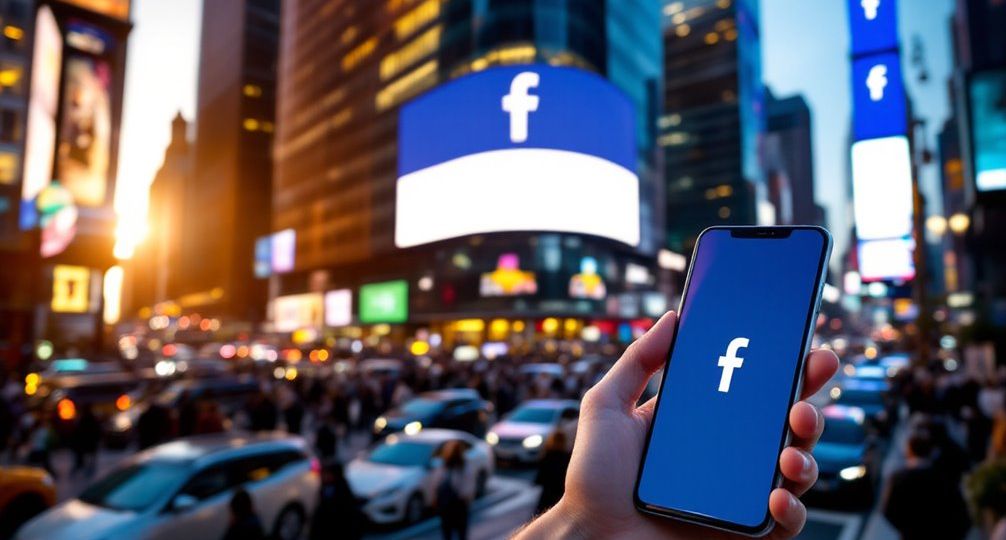
How much does Facebook traffic cost?
It’s interesting how just as you’re pondering the cost of Facebook traffic, the platform’s pricing intricacies come into focus. You’re likely aware that the Cost Per Click can vary widely, but have you considered how industries like legal and travel experience such different rates? This variation isn’t just about numbers; it’s a reflection of strategic decision-making and budget mastery. Are you ready to navigate through the complex web of factors that influence these costs and uncover insights on optimizing your ad spend? There’s much more to discover about maximizing your investment.
Key Takeaways
- Average CPC for Facebook traffic campaigns is reported as $0.77 by WordStream.
- U.S. has the highest Facebook CPC at $1.12, reflecting market competitiveness.
- India’s Facebook CPC is lower at $0.15 due to emerging market dynamics.
- Facebook Ads’ average CPL is around $6.76 from Jan 2020 to Sept 2023.
- Geographic and industry variations significantly influence Facebook traffic costs.
Average Cost Per Click

Analyzing the average cost per click (CPC) for Facebook ads reveals significant insights into the dynamics of digital advertising.
You’ll notice that the global CPC stands at $0.58, reflecting various CPC trends across industries and regions. From 2020’s low of $0.39 to the predicted $0.63 in 2024, CPC fluctuations highlight the impact of economic shifts and market maturity. Notably, the highest CPC observed is in the United States at $1.12, which underscores the competitive landscape in developed markets.
In the U.S., a key market, the CPC benchmark is $0.52, while WordStream’s data shows a higher $0.77 for traffic campaigns. Countries like India present lower CPCs, such as $0.15, due to emerging markets’ nature.
Understanding these global CPC shifts allows you to strategize effectively, ensuring your ad spend aligns with market conditions and optimizes returns.
Understanding Cost Per Mille
To grasp the intricacies of Cost Per Mille (CPM), it’s essential to understand its role as a billing metric in Facebook advertising. CPM, or cost per 1,000 impressions, determines how much you pay when your ad appears to users. Recent data shows an average CPM of $13.75 per 1,000 impressions as of November 2024. Industry, location, and seasonal trends considerably impact these rates, with costs historically ranging from $5 to $14.10 due to economic shifts and events. Notably, advertising costs increase during peak shopping periods, making it crucial to adjust strategies accordingly. Strategic CPM strategies involve leveraging impression metrics to optimize budget allocation and enhance ad reach. By closely monitoring these metrics, you can adjust campaigns to align with your objectives, ensuring you stay competitive in an ever-evolving digital landscape.
Factors Influencing Ad Costs

When it comes to Facebook advertising, several factors greatly influence ad costs, making it essential to understand these elements for strategic budget planning.
Your target audience plays a pivotal role; specific demographics, interests, and competition for the same audience can drive up costs. Narrower targeting might increase cost per click but often yields higher conversion rates.
Ad formats and placement also markedly affect prices. Premium placements, like the news feed, and engaging formats, such as videos or carousels, enhance visibility but come at a premium.
Furthermore, your bidding strategy can either optimize or inflate expenses. Choosing between spend-based and goal-based strategies, along with setting bid caps, can strategically manage costs. Implementing effective bid strategies can help maintain control over your overall expenses, ensuring that you stay within your advertising budget.
Monitoring ad performance and seasonality further refines your budget efficiency.
Typical Ad Spend Range
Understanding the typical ad spend range on Facebook is essential for strategically planning your marketing budget. Most marketers allocate $1 to $500 monthly, with 28.65% spending $101 to $500. For small-scale campaigns, the minimum daily ad spend starts at $1, often rising to $5, allowing flexibility in aligning with your budget strategies and goals. Small businesses typically spend $31 to $90 monthly. Industry-specific factors influence ad spend, where some allocate $1,000 to $3,000 monthly, reflecting diverse business needs. The average cost-per-click (CPC) across all industries is $0.513, which can significantly impact how businesses choose to allocate their advertising budgets. Budget allocation varies across objectives like clicks and impressions, emphasizing the importance of adjusting budgets based on performance and ROI. Strategically optimizing ad spend guarantees effectiveness, whether you’re managing a modest or substantial marketing budget.
Cost Per Lead Insights

You’re likely aware that industry-specific lead costs vary greatly, with Real Estate seeing a low of $13.87 and Attorneys and Legal Services peaking at $104.58. Analyzing factors like audience size, market competition, and ad performance is essential for understanding these disparities and identifying opportunities for cost reduction. Benchmarking against industry averages and optimizing metrics such as CPM and CTR can strategically enhance your cost efficiency. Facebook lead ads are designed to generate qualified leads directly on the platform, making them a valuable tool for businesses aiming to grow their customer base.
Industry-Specific Lead Costs
While the average cost per lead (CPL) for Facebook Ads has hovered around $6.76 between January 2020 and September 2023, it’s important to recognize that this metric varies considerably across different industries.
If you’re focused on lead generation and cost efficiency, understanding industry-specific CPL benchmarks is vital. For instance, industries like travel, arts and entertainment, and restaurants report lower CPLs, aligning with their low CPCs.
However, more niche sectors may see higher costs due to targeted audiences. The travel sector remains particularly efficient, while the arts and entertainment industries benefit from naturally lower costs. Facebook Ads costs fluctuate frequently, impacting budgeting strategies, so staying informed about cost changes is crucial to maintaining competitive pricing.
Your strategic approach should consider how varying CPLs align with your sales funnel and lead conversion rates, ensuring you achieve ideal cost efficiency in your campaigns.
Influencing Factors Analysis
Steering the cost per lead for Facebook ads requires a strategic understanding of several influencing factors. You need to grasp how audience segmentation and bidding strategies impact your expenses. Here’s a concise analysis:
- Audience Segmentation: Targeting competitive demographics increases costs. Larger, more specific audiences demand higher investments, especially in affluent or densely populated regions.
- Ad Quality and Relevance: High-quality ads with better relevance scores lower costs. Focus on increasing click-through rates and optimizing for relevant actions to reduce expenses.
- Bidding Strategies and Budget: Selecting the right strategy, like CPC or CPM, notably affects costs. A balanced budget against objectives is essential for efficiency. Regular monitoring of average cost metrics can help ensure your budget aligns with market trends and enhances the effectiveness of your campaigns.
- Seasonality and Timing: Costs rise with seasonal trends and peak times. Plan your campaigns around these factors to maximize ROI.
Benchmarking for Optimization
Understanding the benchmarks for optimization is crucial when aiming to lower your cost per lead (CPL) in Facebook ads. With an average CPL of $9.45 as of October 2023, analyzing campaign metrics allows you to strategize effectively. Benchmarks serve as reference points for assessing campaign performance and are crucial for comparison to industry standards, helping gauge success and optimize strategies. By comparing your ad performance against industry benchmarks, you can pinpoint inefficiencies and implement targeted improvements. For instance, if your CTR falls below the industry median, it signals potential issues with ad creatives or targeting. Allocating budgets between $1,000 and $2,000 monthly can yield substantial leads, especially when optimized strategically. Utilize these insights to refine your approach, focusing on enhancing ad engagement and relevance.
Engagement Cost Analysis
Engagement cost analysis is essential for determining the efficiency of your Facebook ad campaigns. By focusing on engagement metrics and audience targeting, you can strategically optimize your ad spend.
Calculate the cost per engagement by dividing the total ad cost by engagement actions like likes, shares, and comments. Here’s how to refine your analysis:
- Relevance Score: Improve this to lower your CPM by ensuring content resonates with your audience.
- Estimated Action Rates: Analyze these to predict user interactions and adjust your CPC strategy.
- Audience Targeting: Tailor your targeting to reduce costs and enhance engagement. It’s important to recognize that diverse objectives necessitate different metrics for assessment, as different campaigns, such as lead generation or traffic objectives, emphasize varying goals and strategies.
- Bidding Strategy: Use intelligent bidding to maximize impressions and minimize expenses.
Implementing these tactics will drive innovation and elevate your campaign’s effectiveness.
Industry-Specific Cost Variations

Analyzing engagement costs lays the groundwork for understanding industry-specific cost variations in Facebook advertising. In a cost comparison, Travel enjoys one of the lowest CPCs at $0.42, while Attorneys and Legal Services bear the brunt with $1.09 CPC. Regional disparities also play an essential role; for instance, CPCs in Western Europe fluctuate between $0.30 and $0.50, whereas Northern America spans $0.40 to $0.65. Real Estate’s CPL of $13.87 seems appealing compared to the legal sector’s $104.58. Competition, ad quality, and strategic bidding greatly influence these variations. To optimize costs effectively, consider how factors like audience targeting can significantly impact your Facebook advertising expenses. As you navigate this landscape, consider how industry dynamics and geographic location impact your costs, and innovate your approach to maximize ad spend efficiency in diverse markets.

